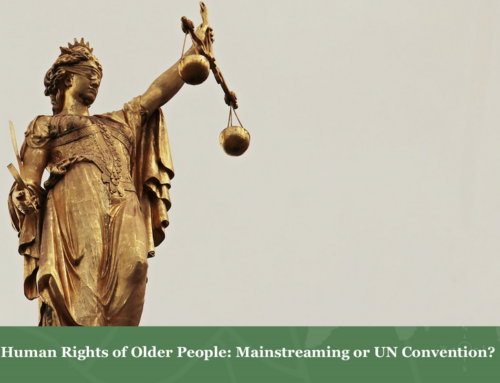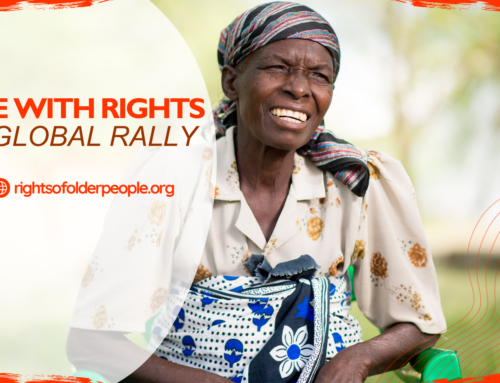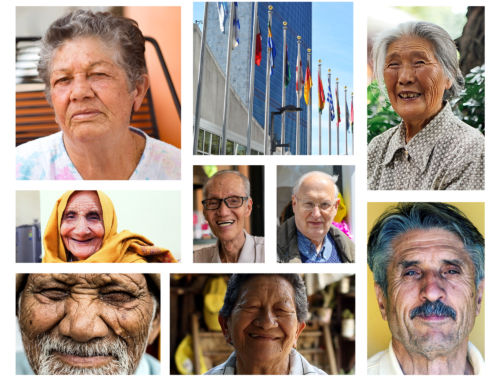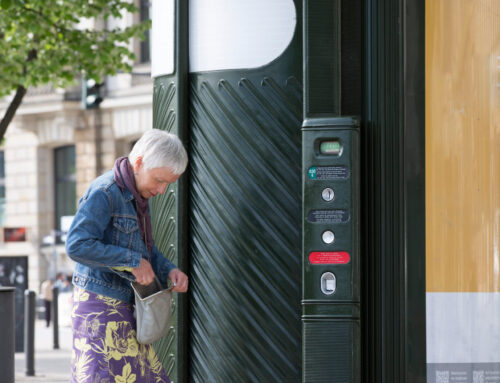We talk a lot about equality when we advocate for older persons. Equal access, equal opportunity, equal treatment. We measure equality by comparing older persons in different parts of the world, social classes and economic situations. We measure equality by comparing older and younger persons.
Working towards the goal of a more fair, more open and more fulfilling society is admirable and achievable. But what if our laser focus on equality is making the journey more difficult? Might equity be the better path?
On this World Philosophy Day, let’s look at these concepts more closely and consider which one will best help us reach our goal of barrier-free living for older persons.
Equality and Formal Equality
Equality, and its corollary inequality, come up often in discussions of moral philosophy, law, policy making and our day to day lives. A common concept of equality, called formal equality in philosophy, goes back to Aristotle. It is the idea that things that are alike should be treated alike. Apples and apples.
A law or social concept applies to all those who are alike regardless of their social, economic or personal circumstances. Murder is murder. A lie is a lie. On the surface, this sounds good. Binary rules – wrong or not wrong – make life a lot simpler.
As an example, let’s say the government decides to increase the monthly pension payout by 10% for everyone over the age of 75. Income insecurity in old age is a very real problem and a double-digit increase is unheard of. This is clearly a time to rejoice.
Or is it?
Formal equality focuses on equal treatment. This means as long as everyone gets the same percentage the job is done. The trouble is, equality so bluntly applied doesn’t result in equal outcomes.
In our example, does a 10% increase across the board help those living in poverty become financially secure? Likely not, 10% of not very much is still not very much. Does it address the root causes of income inequality and insecurity? Or is it just another in a long list of band-aids? Will this effort backfire because people who already have a good pension will get a better one?
Equity and Substantive Equality
If equality in its absolute form is not going to help us achieve a better future, should we abandon the idea altogether?
Not entirely.
There is another way to view the idea of equality. It is the concept of equity or substantive equality. Equity offers support differently to individuals in order to achieve fairness in outcomes between individuals. It takes into account unique needs and circumstances, such as cultural, social, economic and historical disadvantage.
A child who starts out in a well-off family has access to the education, social connections and cash they need to remain well-off. A child born into poverty, without the same building blocks, face more socioeconomic challenges growing up. When this child enters old age, he or she will likely be at greater risk of income, housing and food insecurity.
Substantive equality, as a legal principle, is rooted in equity. It is both a process and the end goal. Substantive equality addresses inequalities in order to get true equality in outcomes. It applies positive discrimination. It is the idea that it is unfair to punish people who have been luckier by their removing privileges. They didn’t choose their lives either. Instead, positive discrimination redress the balance and give those who are disadvantaged the chance to thrive.
Equity and Substantive Equality as the Equalizer
In our government example, the funds earmarked for pension top up would be used specifically to help older persons living in poverty. Policies and programs focus on closing the income gap and addressing poverty related challenges:
- scale pension increases so that anyone approaching old age below the poverty line have enough each month to survive
- ensure access to transportation, community programs and care with reduced fees
- fund employment skills training/transfer or small business start-up programs for those who want to work
- incentivize conversion of single-dwelling homes into co-housing to give asset-rich/cash poor older persons monthly income and others access to lower rent through housing sharing
The substantive equality approach is better in the long run. Canadian courts favors this equality philosophy. Implementation, however, is complex. It takes work to coordinate between policy areas. It is challenging to measure overall impact when the results are dispersed across different areas. For politicians, giving constituents cash in their pockets is far more advantageous.
Equity and the rights of the older person
Social and economic inequities exists within the older person age cohort and across age cohorts. Ageism, workplace inequalities, poor access to care are just a few examples.
This then brings the questions of rights. Do our human rights charters protect older persons as their vulnerability increase with age? Do they ensure older persons equal opportunities? Beyond protecting rights to the basic needs, do they enable older persons to live the life they want?
We’ll explore this topic next month in conjunction with Human Rights Day. As always, if you have any thoughts on how equality and equity improve the well-being of our older persons, leave a comment or drop us a line. We’re always happy to hear from you.






